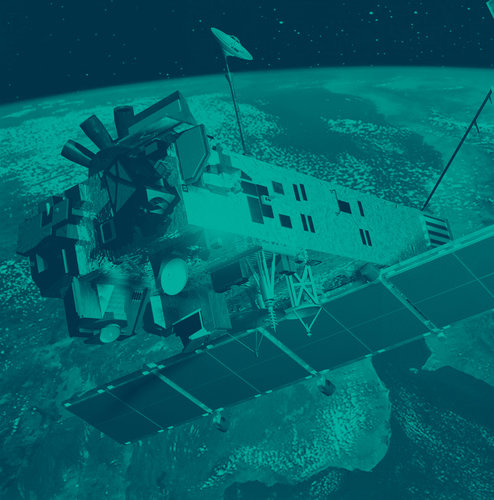Overview
The world is rich in resources with the potential to create wealth, but in order to be exploited they must first be identified. Looking down from orbit helps reveal resources on or under the land and sea that may otherwise go untapped.
Drawing on renewables
Counted among these are renewable resources represented by wind, wave and solar energy as well as hydro-electrical power harvested from fast-flowing rivers.
By returning data on hilltop snow cover or precipitation amount, satellite images capturing an entire river basin within a single acquisition enable accurate advance estimates to be made of future reservoir depth and hydropower production.
Space-based instruments also make possible the creation of wide-ranging 'sunshine indexes' for the optimal location of solar energy farms, and by recording incoming solar energy amount they provide an objective yardstick for checking existing farms are functioning efficiently.
Offshore energy and fisheries
Orbital sensors recording wind and wave parameters can provide the equivalent service for wind and wave farms – especially useful for positioning offshore facilities where meteorological statistics are not usually gathered.
The living natural resource that is the world's fisheries can be exploited more efficiently with ocean current and sea temperature data returned from satellite serving as a basis for guiding fishing fleets to areas where the catch of desired species is likely to be highest.
Prospecting from space
As our planet's oil and gas reserves dwindle, energy companies increasingly have to look further afield for fresh resources.
Offshore frontier areas such as the Arctic and south-east Asia have become an increased focus of interest, but the harshness and inaccessibility of these regions may make traditional mapping and exploration methods impractical.
Accordingly exploration managers are making increasing use of satellite data as a cost-effective means of carrying out large-scale surveying of unexplored areas. Wide-area satellite images have the potential to identify distinctive geological structures associated with oil and gas reservoirs and also mineral deposits.















 Germany
Germany
 Austria
Austria
 Belgium
Belgium
 Denmark
Denmark
 Spain
Spain
 Estonia
Estonia
 Finland
Finland
 France
France
 Greece
Greece
 Hungary
Hungary
 Ireland
Ireland
 Italy
Italy
 Luxembourg
Luxembourg
 Norway
Norway
 The Netherlands
The Netherlands
 Poland
Poland
 Portugal
Portugal
 Czechia
Czechia
 Romania
Romania
 United Kingdom
United Kingdom
 Slovenia
Slovenia
 Sweden
Sweden
 Switzerland
Switzerland






























